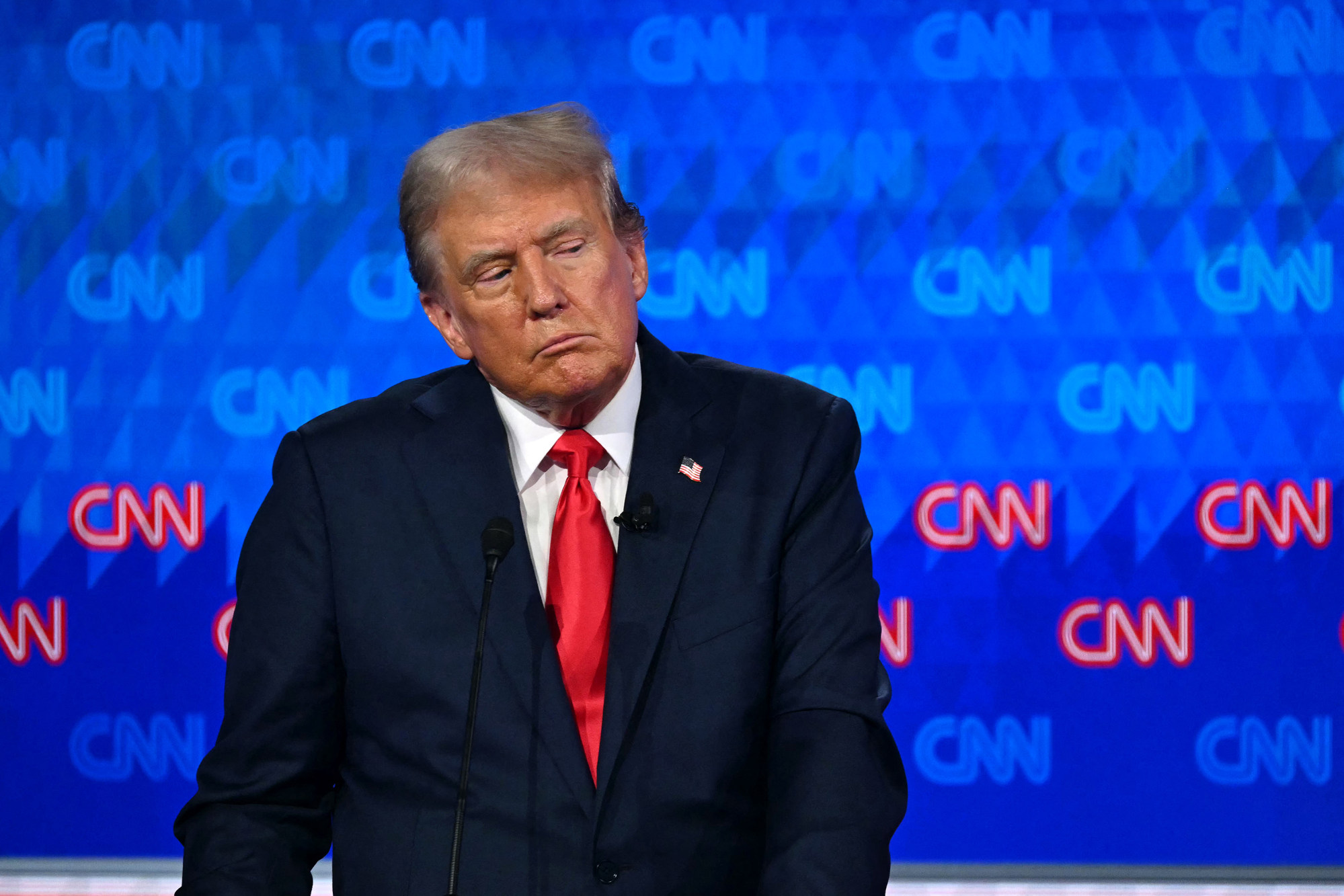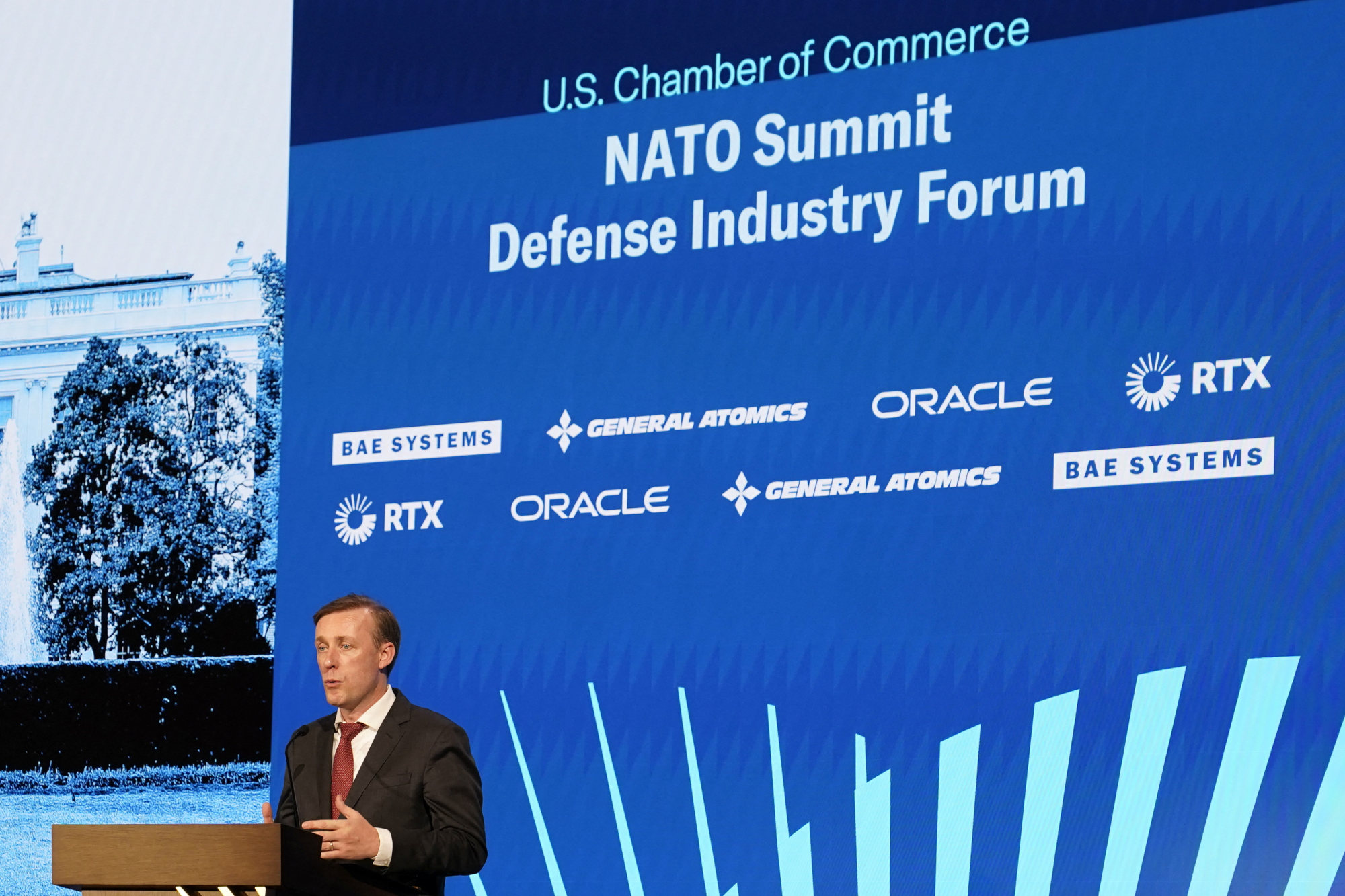Biden to celebrate Nato at summit, making a case for his continued leadership
The summit comes as Biden, 81, faces significant concerns by fellow Democrats about his chances for re-election this fall following his poor performance during a June 27 debate against his presumptive Republican opponent, former president Donald Trump.
The Nato assemblage provides an international stage to convince allies that he can still lead, both at home and abroad.
Biden, who has emphatically declared he is staying in the race, insists he can maintain US global leadership for another four years. During his administration and his re-election campaign, he has focused on working with democratic allies and partners to counter autocracies like Russia, North Korea, Iran and China.
Trump, on the other hand, made no secret of his antipathy towards Nato during his time in the White House, sharply criticising member nations for failing to spend enough on their own militaries and contending they were relying too much on the US.
On the campaign trail Trump has raised that issue again, as well as vowed to cut US aid to Ukraine for its defence against Russia’s invasion.

In 2023, only nine Nato member nations spent about 2 per cent of their GDP on defence, a threshold agreed to in 2016. This year, that number has reportedly risen to more than 20 member nations.
A report by Republicans on the US Senate Foreign Relations Committee last week contended that the 2 per cent mark was no longer sufficient to counter the threats posed by Russia and China, and called for Nato nations to raise their defence budgets even further.
“This is necessary both for Nato’s defence, but also allies in the Indo-Pacific who want to rely on Western weapons systems,” it said.
Staring at the possibility of reduced American support, Nato officials and the Biden administration come to this summit seeking to ensure long-term support for Ukraine; as well as strengthen and expand the alliance’s defence industrial cooperation globally, including the Indo-Pacific.
National Security Adviser Jake Sullivan told a gathering of defence industry leaders at an event hosted by US Chamber of Commerce on Tuesday that allies would develop “regionally focused” plans to ensure that Nato “will have the forces and weapons it needs to confront pressure in any direction, or even multiple directions at once”.
He said that a new Nato military command in Germany would train and equip Ukrainian troops along with a US$40 billion security package for the war-wrecked country. Additionally, he said, Nato allies would launch new projects in cybersecurity, disruptive technologies and deterring China with Australia, Japan, South Korea, New Zealand.
Reiterating the US position that China, as well as North Korea and Iran, was using dual-use trade to aid the Russian defence industry, Sullivan said that the allies were “watching carefully to see what Russia provides these countries” in return to determine the impact on security of the Indo-Pacific region and other parts of the world.

At the same event, US Deputy Secretary of Defense Kathleen Hicks said that the “most important thing” allies would do this year for the future of Nato is “strengthen our defence industry”.
For most of Nato’s existence “we faced a single strategic competitor that was relatively slow and lumbering”, she said, referring to Russia and its predecessor, the USSR.
Now, though, “we also cannot ignore the global pacing challenge presented by the People’s Republic of China”.
“So we have to double down with urgency and confidence,” she added, urging partners to “step up international defence industry cooperation with like-minded democracies wherever we can – with Nato allies, and non-Nato partners” and remain prepared for the likelihood of a protracted war, “and not just in Europe”.
The outgoing Nato secretary general Jens Stoltenberg told the military contractors that while the summit was an occasion to celebrate, it was also time to demonstrate that Nato was “fit for the future”.
It was time, he said, to “change the language to saying that 2 per cent is a minimum” and “some kind of ceiling”.
Representatives of the Nato’s Nordic and Baltic members earlier on Tuesday at the Atlantic Council, a think tank in Washington, struck a similar note.
Addressing threats that Trump has made about leaving the alliance, Danish Foreign Minister Lars Lokke Rasmussen said that Trump “wasn’t really satisfied for very good reasons”, because few members were meeting the 2 per cent target.
“But things have changed now and two-thirds of the allies now will meet these criteria.”
Foreign Minister Tobias Billstrom of Sweden, Nato’s newest member, went further, saying the 2 per cent target should be “a floor, not a ceiling” – specifically suggesting that Nato members needed to spend more on their militaries to deter China from aggression in the Indo-Pacific.
“We have to make the case for this connection between Russia’s aggression against Ukraine and what this means on the global level,” he said.
“You very often meet people in the Indo-Pacific areas, representatives of smaller states there as well – like the Philippines, like Vietnam et cetera – who are extremely worried about China and view of the conflict in Ukraine exactly the way that that we do,” Billstrom added.
Additional reporting by Robert Delaney